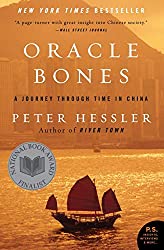
Rating: 7.6/10.
I got this book in Shenzhen, one of the few English books about China in the bookstore. It describes the history of China from 1978 to today. In 1978, China was very poor, having experienced famines and the cultural revolution under Mao Zedong’s rule. The early 1980s was a turning point for China, where Deng Xiaoping started to open up the country to foreign investment and capitalism. He started by setting up “Special Economic Zones” in coastal cities like Shenzhen and Xiamen where he experimented with capitalism. This was a great success.
The 1980s and 1990s saw a gradual shift from communism to capitalism, where the state relinquished control to entrepreneurs and investors. By the 2000s, China was a manufacturing giant and everything was “made in China”. During the mid 2000s, there was a boom in massive construction projects like high speed rail and hundreds of skyscrapers. This was generally a chaotic time, where vast fortunes of billions of dollars could be made and lost in a matter of months. Generally, the trend is positive, and the author described it as “a big ship sailing towards the future”. This also explains why the stock market is not considered a reliable investment in China: it’s subject to a lot more government manipulation, and real estate is considered much more reliable.
This book helped me understand the Chinese mindset, however, the account seems quite one-sided and reads like state-backed propaganda: it leaves out some very important things like the Tiananmen massacre, and internet censorship. The beginning of the book was better, later on it’s basically an unorganized chronological dump of events and government policies — I expected a more coherent analysis of the underlying issues. After reading the book, I feel like I only heard one side of the story, and should supplement my understanding with some more western accounts.



